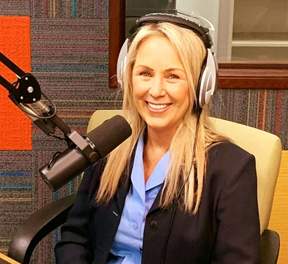Michael McCormick epitomizes excellence in aviation, having clocked 32 years in the industry. As a distinguished aeronautical scientist, seasoned commercial ATP pilot, and esteemed veteran of the United States Air Force, he has navigated a diverse fleet of aircraft, including the iconic F111, Lear, King Air, Citation, and Lancair 4P. McCormick’s legacy was solidified at the age of 25 when he made history by breaking the sound barrier while piloting an F-111. It’s an accomplishment that underscored his remarkable flying skills and pioneering spirit, and boosted his confidence as a pilot. Beyond his achievements in the cockpit, McCormick has established himself as a leading authority in aircraft accident investigation, leveraging his extensive expertise to unravel the complexities of aviation incidents. McCormick’s success is grounded in a robust academic background, including a Bachelor of Science degree in Aeronautics/Aviation/Aerospace Science and Technology from Embry-Riddle Aeronautical University. Mike McCormick also holds several important certifications such as ATP Commercial Multi-Engine Instrument by the Federal Aviation Administration. In his three-decade career, McCormick has played a pivotal role in advising on numerous high-profile aircraft accident investigations, contributing to enhanced safety protocols and industry-wide improvements. Additionally, he is deeply committed to mentoring aspiring aviation professionals, sharing his wealth of knowledge and experience to guide the next generation toward success in aviation.
How do you believe advancements in technology, such as automation and AI, are impacting aviation safety, and what measures should be taken to ensure their integration enhances rather than detracts from overall safety?
These technologies are a game changer, and are helping improve safety by reducing human error. However, they are not foolproof and require robust oversight, to make the most of them. I believe training programs on safety should emphasize understanding and manual skills to complement automated systems, ensuring pilots can intervene effectively in emergencies.
In your experience, what are some common human factors that contribute to aviation accidents, and what strategies do you recommend for mitigating these risks?
The most common human-related factors in aviation accidents are fatigue, complacency, and communication breakdowns. To deal with these issues, I usually recommend Crew Resource Management (CRM) training and fostering a culture of open communication. This allows for a proactive assessment of human factors and dealing with them early.
With the increasing complexity of modern aircraft systems, how do you advocate for ongoing training and proficiency assessments for pilots to maintain a high level of safety awareness and competency?
I strongly believe that continuous training and proficiency assessments are essential to keep pilots updated on new technologies and procedures. They can help ensure that pilots operate aircraft safely and effectively in evolving environments.
Could you discuss the role of organizational culture in promoting a strong safety culture within aviation companies, and how can leaders effectively foster this culture among their teams?
From my experience, organizational culture sets the tone for safety. Leaders must prioritize safety, encourage reporting of hazards, and foster an environment where all employees feel empowered to speak up about safety concerns without fear of repercussions. This is the only way any issues can be identified early and handled before they can turn into something more complex.
As an aircraft accident investigator, how do you approach balancing the need for accountability with creating an environment where individuals feel comfortable reporting safety concerns without fear of reprisal?
I usually do it by creating a supportive reporting culture that requires transparent investigations focused on systemic issues rather than blame. By implementing non-punitive reporting systems, I encourage open communication and helps fosters a culture of continuous improvement.
What lessons can be learned from past aviation incidents, and how can these lessons inform future safety initiatives and regulatory changes within the industry?
I believe learning from past incidents is crucial for preventing future accidents. From my experience, doing a root cause analysis helps identify systemic issues, leading to targeted safety improvements and regulatory changes aimed at preventing similar incidents in the future.
With the global nature of aviation, how do you see international collaboration playing a role in improving safety standards and sharing best practices across borders?
International collaboration is vital for establishing consistent safety standards and sharing best practices across borders. Platforms like ICAO facilitate cooperation, allowing countries to learn from each other’s experiences and harmonize regulations to improve global aviation safety. It’s the way to go in sharing best practices across borders.
How do you assess the effectiveness of safety management systems (SMS) within aviation organizations, and what recommendations do you have for companies looking to enhance their SMS to proactively identify and address safety risks?
Over the years, I have noted that, Safety management systems (SMS) are most effective when they actively involve all employees in hazard identification and risk mitigation. I usually recommend regular audits and feedback mechanisms to ensure SMS effectiveness, and fostering a proactive safety culture within aviation organizations.
With the emergence of new technologies such as electric aircraft and urban air mobility, what unique safety challenges do you foresee, and how can the industry prepare to address these challenges effectively?
I foresee a number of challenges key, among them being battery management and airspace integration. The industry is preparing for these challenges through collaborative research, stringent certification processes, and ongoing risk assessments. These are essential to address these challenges and ensure the safe integration of new technologies into aviation.
As a mentor to aspiring aviation professionals, how do you instill a strong emphasis on safety from the beginning of their careers, and what advice do you offer for maintaining a lifelong commitment to safety excellence in aviation?
I instill strong safety ethos by emphasizing situational awareness, adherence to procedures. I also constantly remind those under my mentorship that a commitment to continuous learning and improvement lays the foundation for a lifelong dedication to safety excellence in aviation. So far, this approach has worked in bringing up a new generation of high quality aviators.




